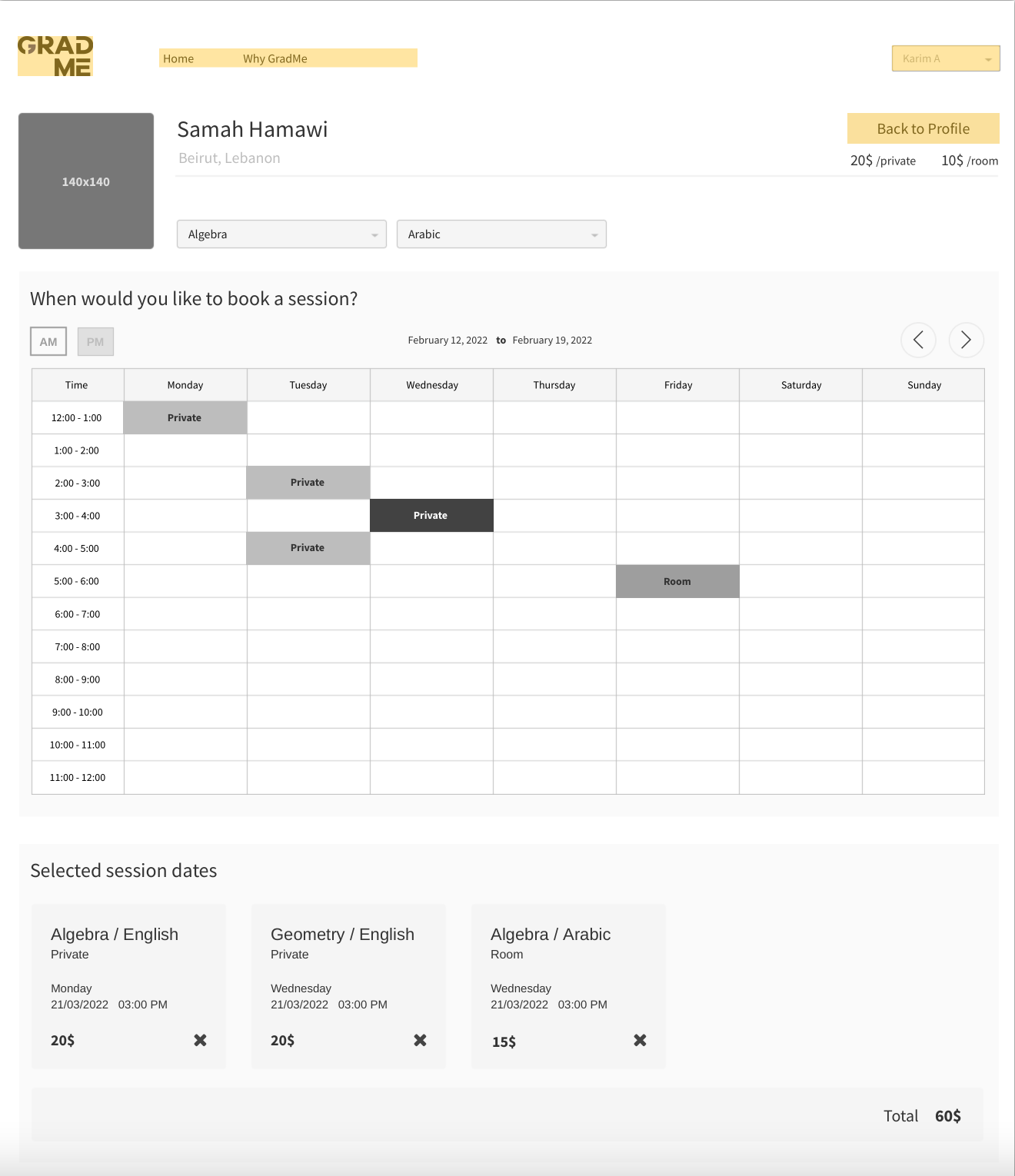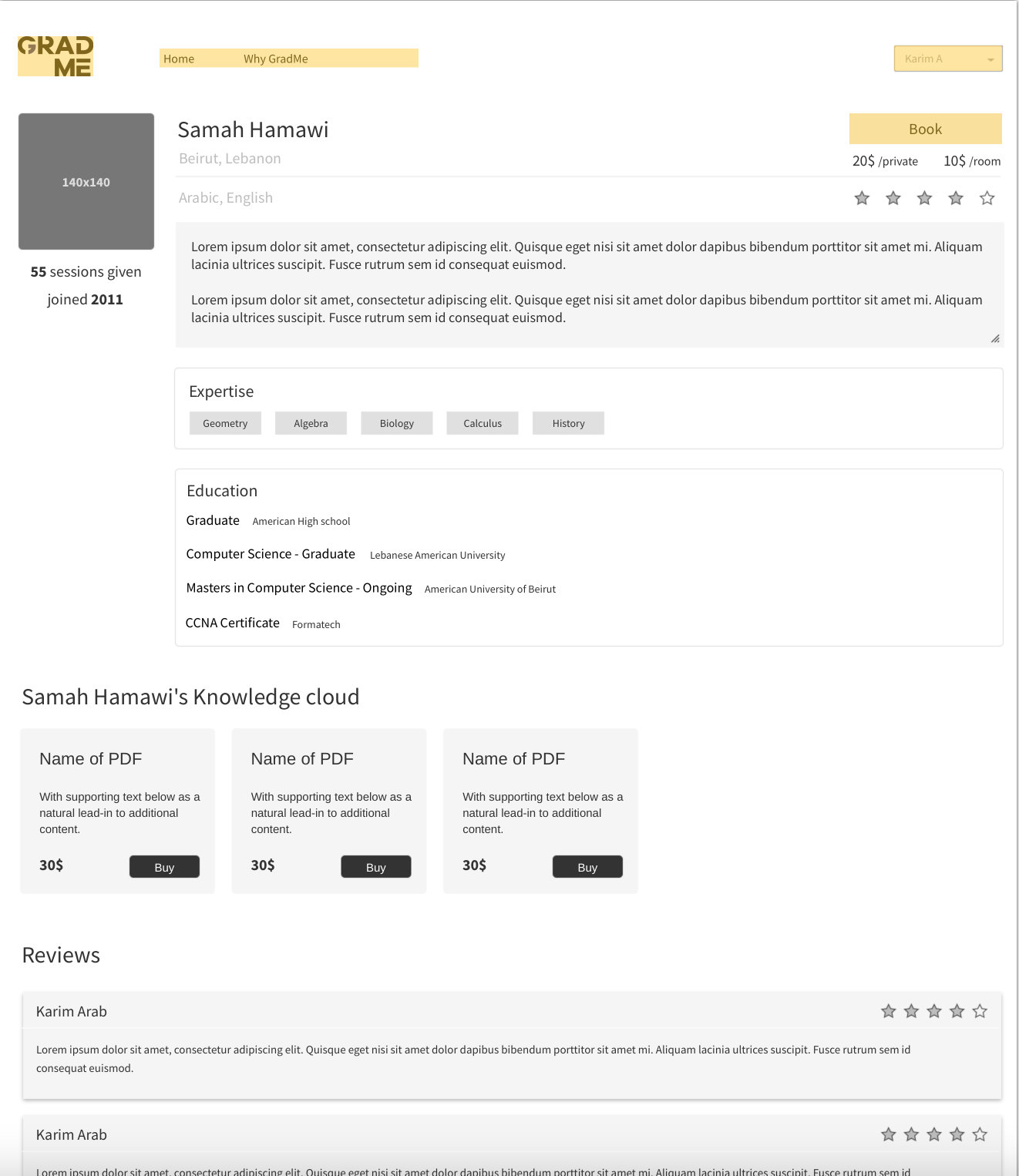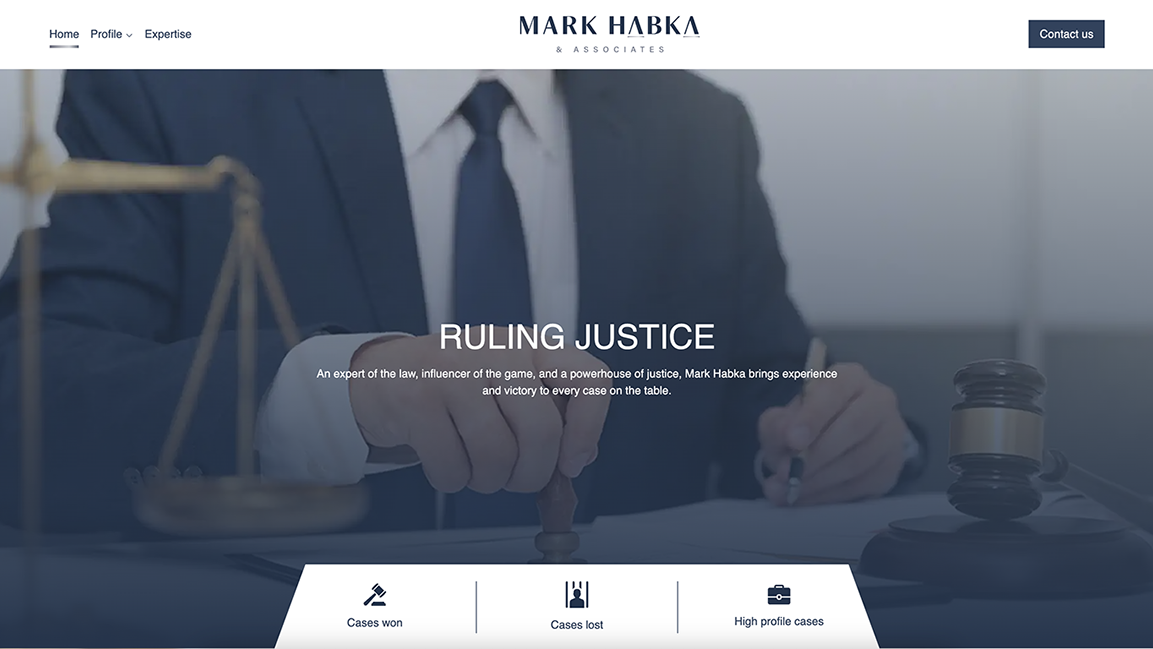Introduction
GradMe is a student-centered learning site that disrupts the traditional educational model by connecting students with their peers for learning and teaching opportunities. It aims to empower students by offering a comprehensive range of subjects and creating a collaborative environment for knowledge sharing. With diverse categories like engineering, arts, science, and math, GradMe provides students with the resources and guidance they need to excel in their studies.
Project Overview
GradMe is an ambitious project that aims to revolutionize the learning experience for students. It offers a student-centric platform where students can connect with their peers and access a wide range of subjects and categories. The platform provides resources, study materials, and interactive learning experiences tailored to individual needs. A unique feature of GradMe is the opportunity for students to become scholars and share their expertise with others, while also earning income. The project aims to create a supportive and engaging ecosystem that promotes collaboration, interaction, and mentorship among students, empowering them to excel in their studies and foster meaningful connections.
Design Process
The design process for GradMe followed a systematic approach to ensure a user-centered and intuitive learning platform
Here are the key steps involved:
Research
Extensive research was conducted to gain insights into the needs, preferences, and pain points of students in the learning process. This included surveys, interviews, and market analysis to identify gaps in the existing educational landscape.
Sample Survey Questions:
1-What challenges do you face in the current learning environment?
Answer: Many students find it challenging to access personalized learning resources and receive individualized guidance in traditional classroom settings. They often struggle with limited interaction and collaboration opportunities with their peers.
2-How do you prefer to learn and acquire new knowledge?
Answer: Students today prefer interactive and engaging learning experiences that go beyond textbooks and lectures. They value hands-on activities, visual aids, and opportunities for discussions and practical application of concepts.
3-Have you ever sought help or guidance from fellow students in your studies? If yes, how was your experience?
Answer: Yes, students often seek assistance from their peers, as they can provide unique perspectives and explanations that resonate with their fellow students. Collaborating with peers fosters a sense of community and promotes deeper understanding of the subject matter.
4-What subjects or topics do you find most difficult and would benefit from additional support?
Answer: Students often struggle with complex subjects such as mathematics, science, and computer programming. These subjects require clear explanations and interactive learning resources to facilitate comprehension.
5-Are you interested in sharing your knowledge and expertise with others? If yes, which subjects would you be interested in teaching?
Answer: Many students are enthusiastic about sharing their knowledge and expertise with others. They are willing to teach a variety of subjects, including math, science, literature, programming, and even extracurricular activities such as music or art.
6-What features or functionalities would you expect from a student-to-student learning platform?
Answer: Students would appreciate a user-friendly platform that allows them to search for specific subjects, access relevant study materials, and engage in discussions with other students. They also value features that facilitate mentorship opportunities, such as the ability to connect with scholars in their preferred fields.
7-How important is community engagement and interaction in your learning experience?
Answer: Community engagement and interaction play a significant role in a student's learning experience. Students value the opportunity to connect with like-minded individuals, share ideas, ask questions, and receive feedback. Active participation in a learning community fosters motivation and a sense of belonging.
8-Would you be willing to pay for access to high-quality learning resources and mentorship from fellow students?
Answer: Yes, students recognize the value of high-quality learning resources and personalized mentorship. They are willing to invest in their education to access comprehensive study materials, expert guidance, and opportunities for growth.
Ideation
Brainstorming sessions and collaborative discussions were held to generate ideas and concepts that aligned with the project goals. Various features, learning models, and user interaction concepts were explored during this phase.
Wire-framing
Low-fidelity wireframes were created to establish the basic structure and layout of the platform. These wireframes served as the foundation for the subsequent stages of the design process.





Prototyping
Interactive prototypes were developed to visualize the user flow and test the usability of the platform. User feedback and iterative design cycles helped refine the prototype and improve the overall user experience.
Visual Design
Created a visually appealing and cohesive design that aligns with the brand identity.
Selected an appropriate color palette that evokes a positive learning environment.
Chose typography that is legible and suits the platform's tone. Incorporated engaging visual elements such as illustrations or icons.
Iterative Testing
Conducted usability testing with potential users to identify any usability issues.
Gathered feedback on the platform's functionality and interface.
Iteratively improved the design based on user insights and market trends.


Key Features
In this section, I will highlight the key features of the GradMe learning site that make it a unique and valuable platform for students.
Here are some key features you can include:
Student-to-Student Learning
GradMe enables students to learn directly from their peers. It provides a platform for students to become scholars and share their knowledge and expertise with others.
Wide Range of Subjects
GradMe offers a diverse range of subjects and categories to cater to various academic disciplines. Students can find resources and learning materials for subjects like engineering, arts, science, math, humanities, and more.
Interactive Learning Materials
The platform provides interactive learning materials, including videos, quizzes, and interactive exercises, to make the learning process engaging and enjoyable for students.
Community Interaction
GradMe fosters a vibrant learning community where students can interact, collaborate, and learn from each other. They can participate in discussions, ask questions, and provide feedback to enhance their learning experience.
Personalized Learning Paths
The platform allows students to create personalized learning paths based on their individual goals and interests. They can track their progress, set milestones, and access tailored learning recommendations.
Secure and User-Friendly Interface
GradMe ensures a secure and user-friendly interface for seamless navigation and interaction. It prioritizes data privacy and provides a safe environment for students to engage in the learning community.
By incorporating these key features, GradMe empowers students to take ownership of their learning journey, connect with peers, and gain knowledge in an interactive and collaborative manner.
The UI/UX design of GradMe focuses on creating an intuitive, user-centric, and visually appealing interface. The design process includes user research and the creation of personas to understand the needs and goals of students.
The information architecture is carefully structured, allowing for easy access to courses and materials. The design is responsive and mobile-friendly, catering to students' learning habits on various devices.
Visual consistency and branding are maintained throughout the site to reinforce the GradMe identity. User feedback is actively sought and incorporated into the iterative design process.
Overall, the combined UI/UX design approach ensures a seamless and engaging learning experience for students.
The visual design of GradMe aims to create a clean, modern, and engaging interface. It reflects the brand identity of GradMe, conveying professionalism, trustworthiness, and innovation.
The use of appropriate colors, typography, and imagery establishes a cohesive visual identity. The interface is designed with a focus on clarity, organization, and visual hierarchy, ensuring easy navigation and content discovery for users.
Engaging visuals, such as high-quality images and videos, are strategically placed to enhance the overall appeal of the site.
The design is responsive, adapting seamlessly to different devices and screen sizes. Accessibility considerations, such as color contrast and screen reader compatibility, are taken into account. Visual feedback and microinteractions are incorporated to provide real-time feedback and create a more interactive user experience.
GradMe offers students a diverse range of courses across various subjects through its course marketplace. The platform enables peer-to-peer learning, allowing students to learn from their knowledgeable peers in subjects such as engineering, arts, science, math, and more. Students can rate and review courses, providing valuable feedback to both scholars and fellow students. Interactive learning resources, including quizzes and practice exercises, enhance engagement and reinforce learning concepts. Personalized learning paths enable students to curate their educational journey. The platform fosters community engagement through discussion forums and chat features. Progress tracking, certifications, and a secure payment system complete the dynamic learning experience.
Challenges
Technical Challenge: Integration of Payment Gateway
Description: One of the technical challenges we faced was integrating a secure and reliable payment gateway to facilitate transactions between students and scholars on GradMe.
Solution: We thoroughly researched and evaluated different payment gateway providers, considering factors such as security, user experience, and developer-friendly APIs. After careful consideration, we successfully integrated a trusted payment gateway that ensured smooth and secure transactions on the platform.
User Experience Challenge: Simplifying Course Discovery and Navigation
Description: One of the key user experience challenges we encountered was providing an intuitive and streamlined course discovery and navigation experience for users.
Solution: We conducted user research, including interviews and usability tests, to gather insights on how students typically search for and explore courses. Based on the feedback, we redesigned the course browsing interface, implemented smart filters, and improved the search functionality. By prioritizing simplicity and clarity, we were able to enhance the overall user experience and make it easier for students to discover relevant courses.
Benefits and Results:
By overcoming the technical challenge of integrating a payment gateway, we provided a seamless and secure transaction experience for users, fostering trust and confidence in the platform.
Addressing the user experience challenge of simplifying course discovery and navigation resulted in improved user satisfaction and engagement. Students can now easily find courses of interest, leading to increased enrollment and active participation on GradMe.
Implementation Process:
At GradMe, we followed a systematic implementation process to bring our vision to life.
Here's an overview of the key steps and milestones:
Planning and Research:
We began by conducting in-depth research on the e-learning landscape and student-to-student learning platforms. This helped us identify market gaps and define our unique value proposition. We also conducted user research to understand the needs, preferences, and pain points of our target audience.
Concept Development:
Once we had a solid understanding of the market and user requirements, we developed a comprehensive concept for GradMe. We defined the platform's core features, functionality, and the overall user experience we wanted to deliver.
Design and Prototyping:
Our team of UX/UI designers then translated the concept into visually engaging designs. We created wireframes and interactive prototypes to validate our design decisions and gather feedback from potential users. This iterative process allowed us to refine the user interface and optimize the user flow.
Development and Testing:
With the finalized designs in hand, our development team started building the GradMe platform. We employed agile development methodologies, breaking down the project into sprints and regularly testing and iterating on the features as they were developed. Thorough testing was conducted to ensure a seamless and bug-free user experience.
Integration and Deployment:
Once the development phase was completed, we integrated various components, such as payment gateways, user authentication systems, and content management tools. Rigorous testing was conducted to ensure smooth integration and seamless functionality. Finally, GradMe was deployed to a staging environment for final testing and quality assurance.
Launch and Optimization:
GradMe is currently in the final stages of preparation for its official launch. We are implementing feedback received from early users and conducting extensive performance and security testing to ensure a robust and reliable platform. Our team is committed to continuously optimizing and enhancing the platform based on user feedback and emerging trends in the e-learning industry.
By following this structured implementation process, we have been able to bring GradMe to the brink of launch, ensuring a solid foundation for its success.
In this section, we'll take you on a visual journey through the key screens of the GradMe platform, where students and scholars come together in a collaborative learning environment. Get ready to experience the intuitive design, seamless user experience, and innovative features that make GradMe a unique learning platform. Let's dive in and discover how GradMe can unlock your learning potential!
After completing the scholar profile setup, the scholar's profile is now ready to be published on GradMe. The profile represents their unique expertise, teaching style, and the resources they offer to students. It serves as a professional portfolio and a platform for connecting with potential students. The scholar profile showcases their profile picture, a brief bio, areas of expertise, teaching philosophy, and other relevant information. It also displays the scholar's uploaded notes and documents, providing a glimpse into their knowledge and the resources they have to offer. Here is an image showcasing a sample scholar profile on GradMe
In conclusion, the GradMe platform represents an exciting and promising learning community where students and scholars can connect, collaborate, and unleash their full learning potential. With meticulous design, thoughtful user experience, and innovative features, GradMe is poised to revolutionize the way students learn from each other. The development of the website showcases the dedication and expertise of the team in creating a platform that will empower students to become scholars and share their knowledge with others
Stay tuned for the launch of the GradMe website, where you can embark on your learning journey, connect with scholars, and explore a world of educational opportunities.
Thank you for taking the time to explore my case study for GradMe, the innovative learning platform that empowers students to become scholars. Through careful design and a user-centered approach, GradMe offers a unique opportunity for students to learn from their peers and share their knowledge with others. I invite you to connect with me at mahmoudbakri31@gmail.com if you have any inquiries, collaboration opportunities,Thank you again for your time and interest!


